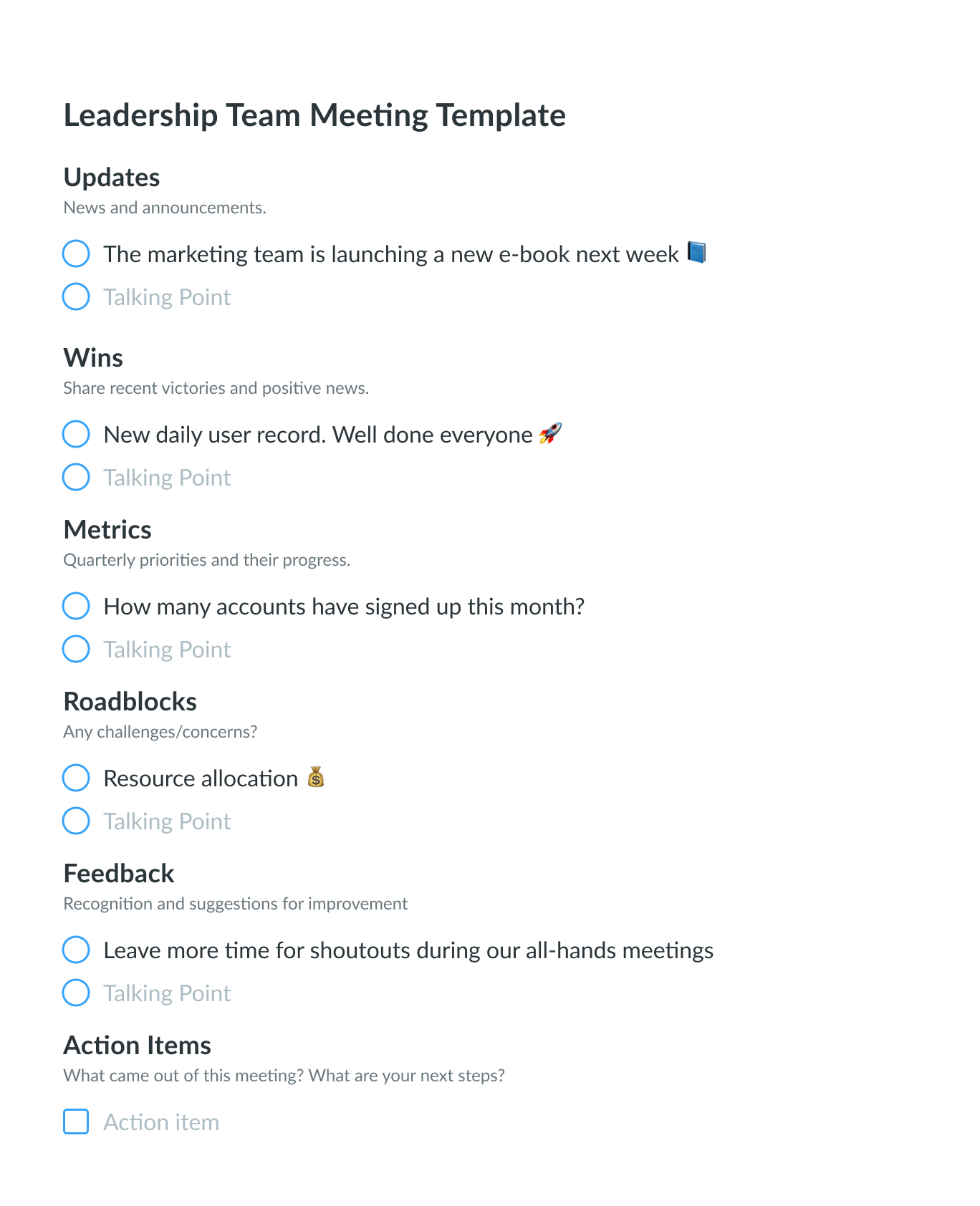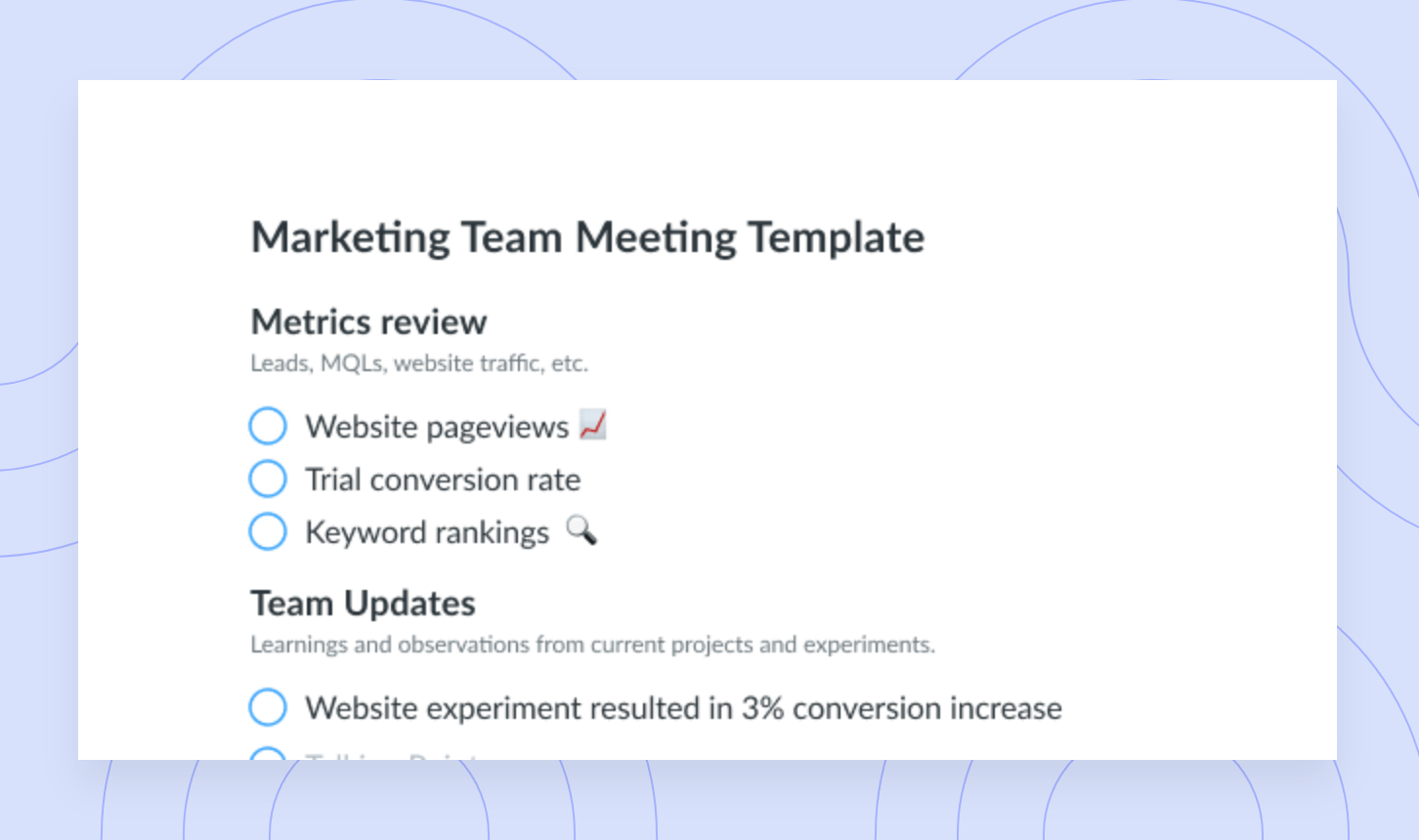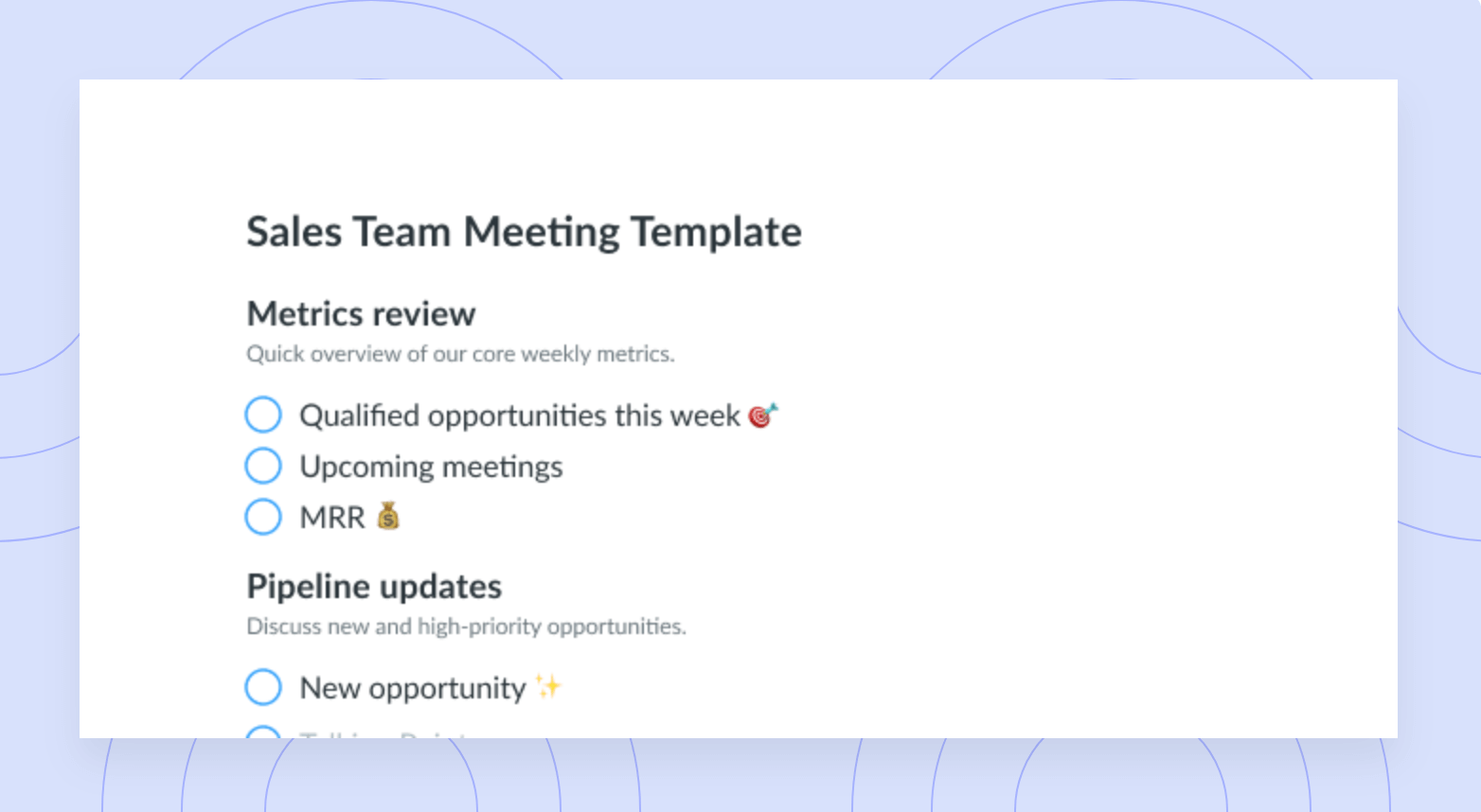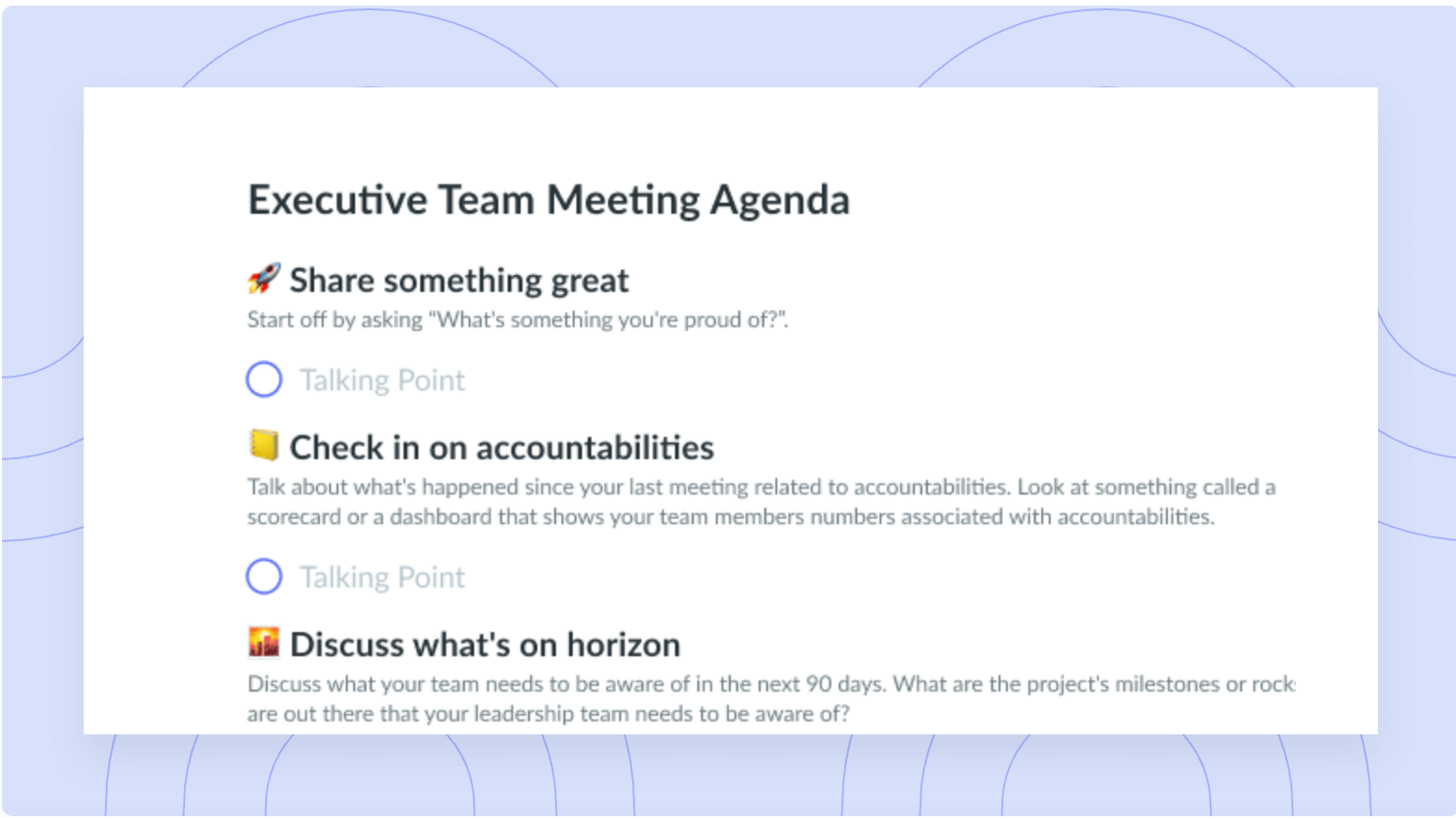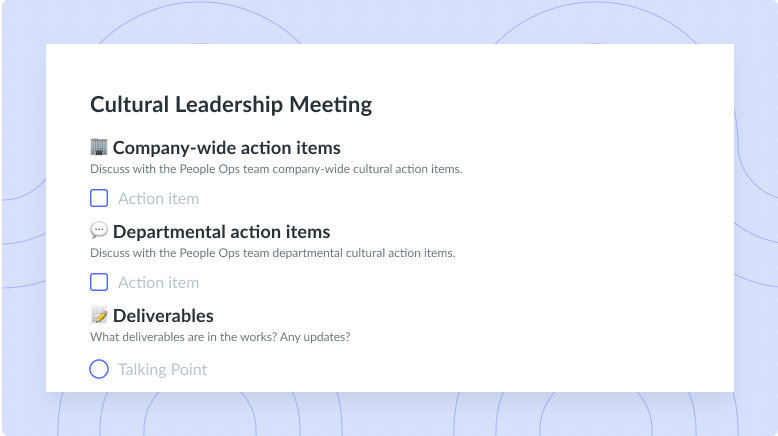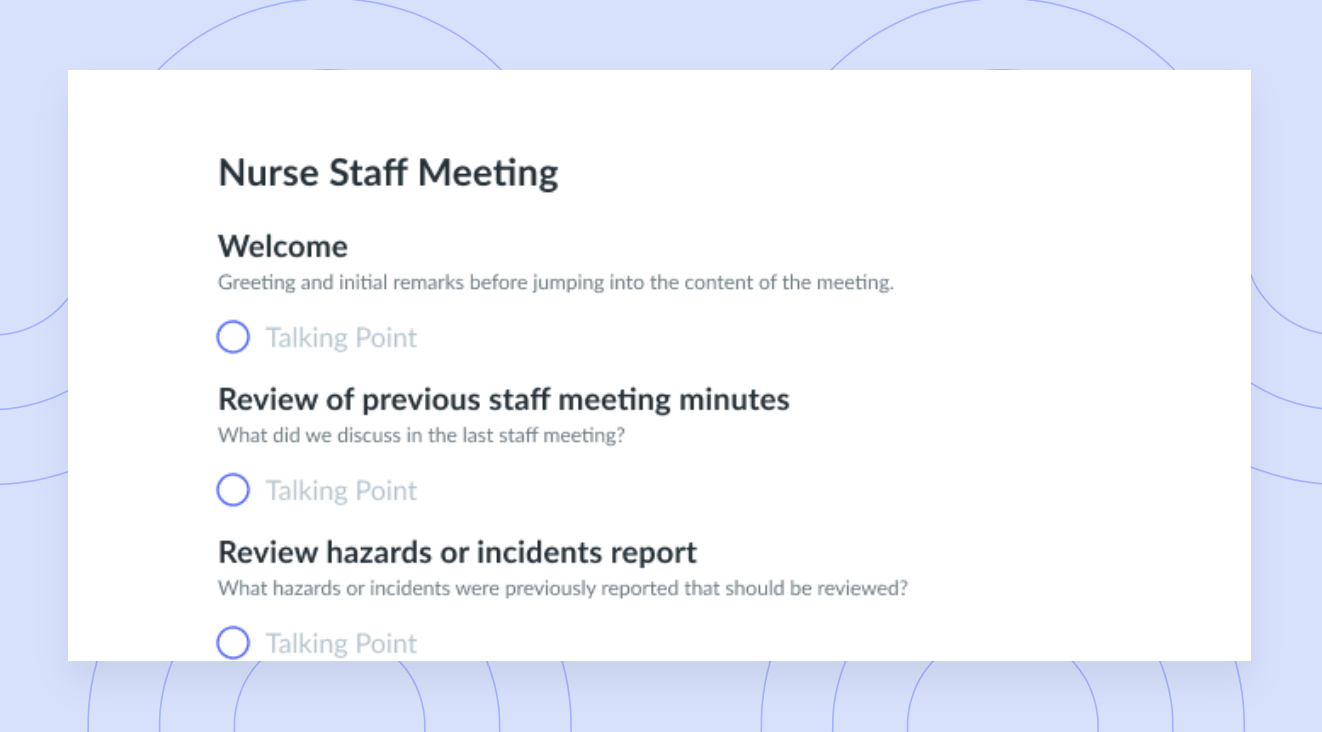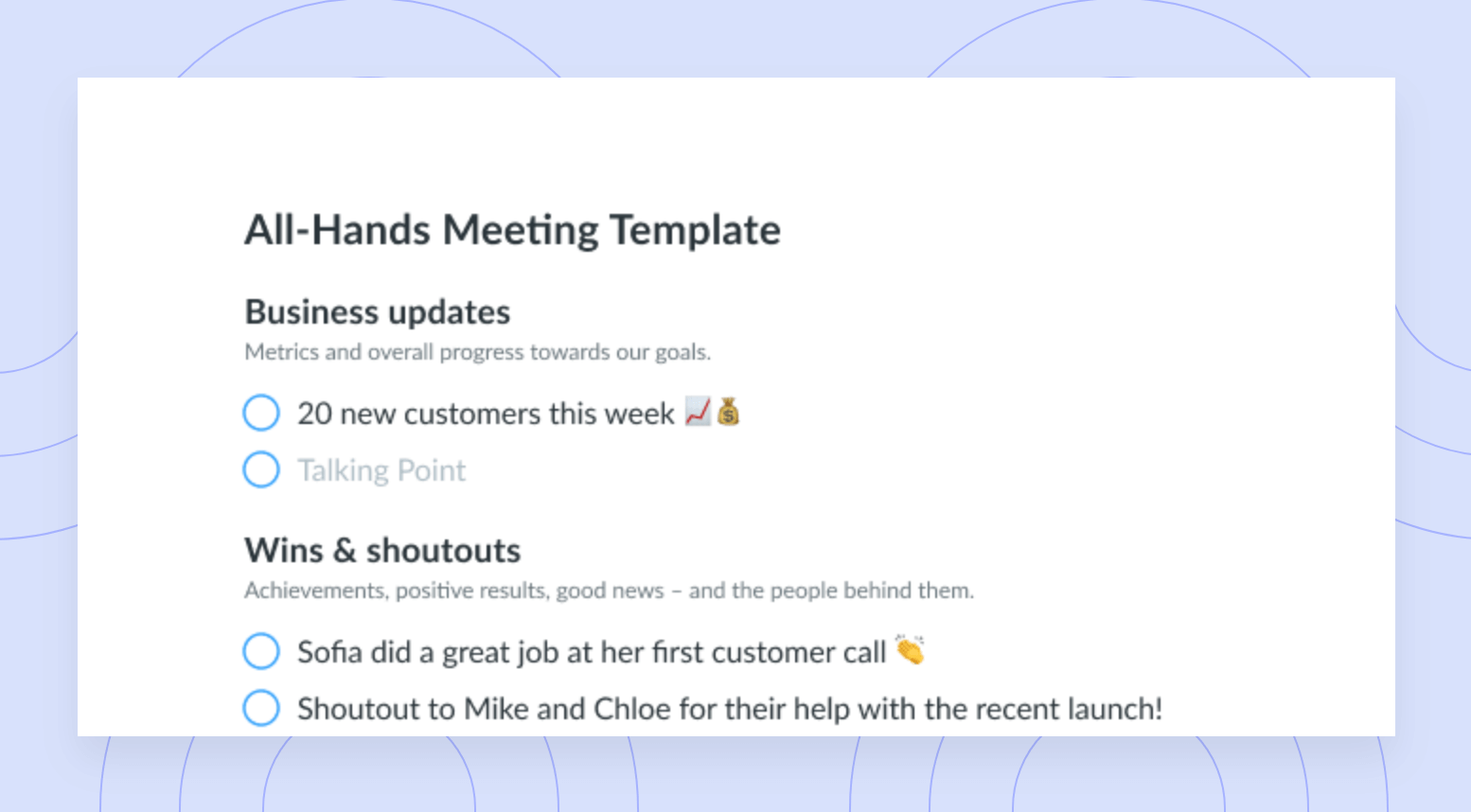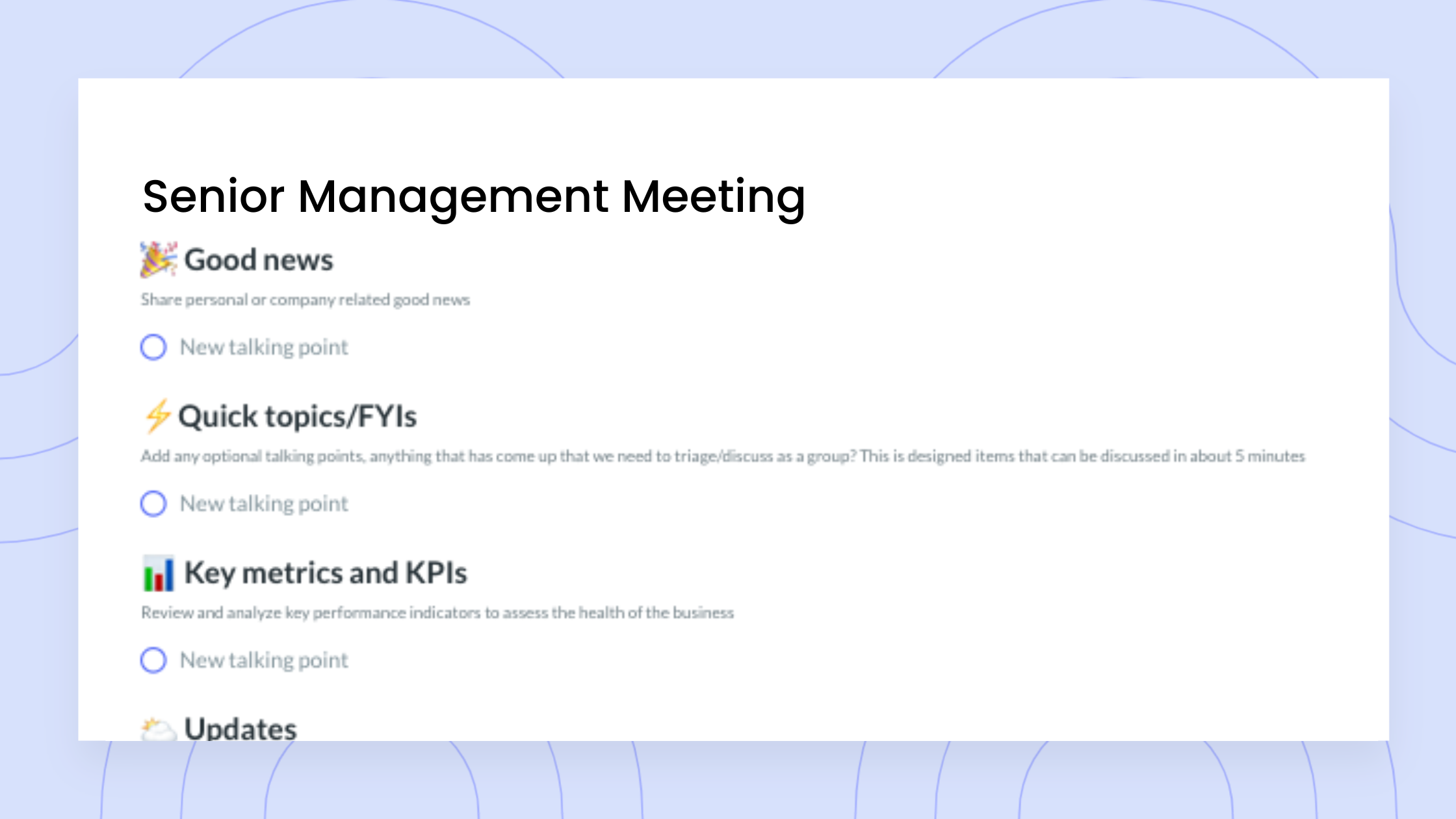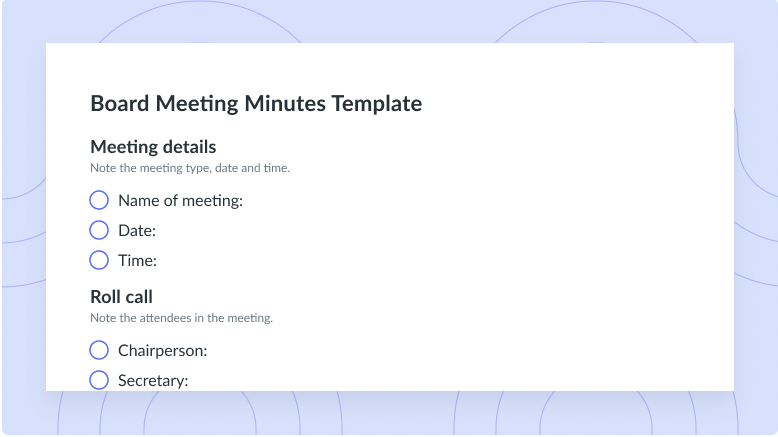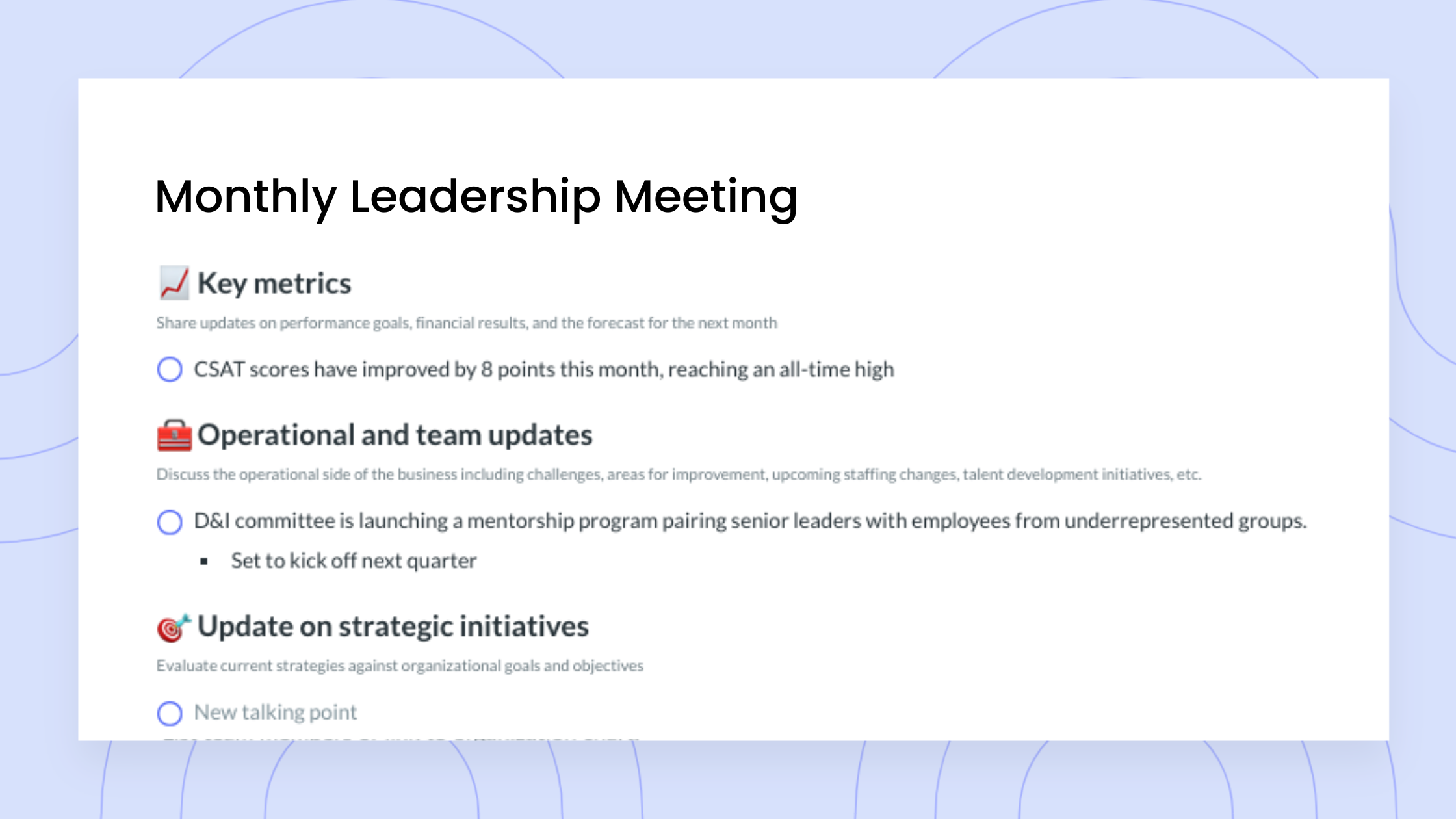
Leadership Team Meeting Agenda Template
Get this templateStructure your leadership meetings with this template designed to facilitate discussions, address roadblocks, and share company updates. Use this template in Fellow to collaborate on the agenda, document decisions, and track next steps
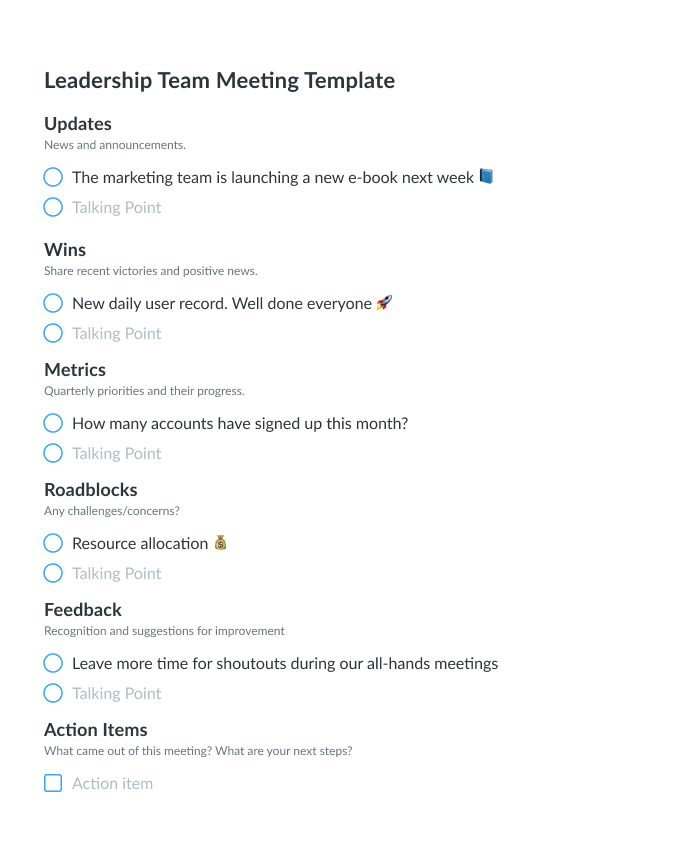

Leadership requires foresight, and having foresight signifies the need to plan ahead and effectively make decisions that benefit your organization. If you want your leadership team to make better business decisions, you can start by scheduling a recurring leadership team meeting and using the leadership meeting template we’ve included below.
Leadership team meetings provide phenomenal value when properly executed and the tone of the meeting is set right from the meeting agenda.
A leadership team meeting enables your executive team to come together to remain up to date and in decision-making mode for the company. A regularly scheduled meeting like this may be critical to keeping every department on the same page. This leadership team meeting agenda template can help keep the meeting on track.
What Is a Leadership Team Meeting?
Your leadership meeting agenda should help to steer this meeting towards desired goals. Most often, this type of meeting is held at least one time a month. The executive and managerial members of the company should come together for the meeting, providing updates about their departments and responsibilities. This is typically a meeting that combines updates with decision-making.
The Purpose of a Leadership Team Meeting
The goal of a leadership team meeting is to ensure decisions made by leadership properly represent the entire company’s goals and objectives while also taking into account the individual needs, limitations, and objectives of each component of the company, such as each team. Done well, leadership team meetings enable everyone in the company to be on the same page going forward for the company.
How to Run an Effective Leadership Team Meeting
Running an executive leadership team meeting requires careful planning. There are many components to that success, but it often requires significant planning prior to the meeting to ensure each department is properly represented. In addition to this, there needs to be a requirement for each person in attendance to have read and understand where each department in the team is on various objectives and goals.
There are various tools that can help with making this meeting a success. Start with a leadership meeting agenda template that allows you to plan out everything that will happen during the meeting. Then, set time limits for conversations and keep everyone focused on the topics on the leadership meeting agenda.
If there is conflict or challenges that arise in the meeting, embrace them instead of fighting them off. This is the time for open discussion in a meaningful and objective manner. Be sure that each person within the conversation is respected and given the ability to ask questions and provide insight into what they are experiencing. Manage time wisely, though. Most leadership meetings take about an hour but can easily stretch longer if there is a significant amount of ground to cover.
Work to stick to the agenda as much as possible. Use it to not only guide the meeting but also as a tool to write down goals or decisions that can be referred to later.
What’s inside this leadership team meeting template:
1 Updates
Your leadership meeting agenda should start off with updates. The beginning of the leadership team meeting is typically the best time to share organizational announcements and news. This gives everyone an opportunity to speak and stay tuned in for the rest of the meeting.
This section will ensure that the leadership team is updated on important departmental initiatives and everyone develops a rounded perspective which translates to informed decision making.
Allow for an intro to the meeting to include updates from each member of the leadership team. This is a time when each person should discuss their specific concerns and updates based on the work they are doing. Each person should be given time to communicate any important departmental initiatives, objectives, challenges, or achievements. This is also a good time to make any announcements, especially those that could influence decisions or conversations throughout the rest of the meeting.
2 Metrics review
Use your leadership team meeting to track progress on company OKRs and overall goals for each department. Identify what projects and initiatives are going in the right direction, and what needs more attention.
Including a metrics review to your leadership team meeting agenda provides your team with a clear point of reference that can be revisited in subsequent discussions during the meeting.
This part of the leadership team meeting agenda template should focus heavily on discussing metrics such as company-wide goals or initiatives that need to be updated. It is a good time to update individual departments on overall company-wide success. Try to have true metrics available to show where any goals and objectives are, as data can help with better decision-making.
Be sure to revisit the same metrics month to month. This way, there is clear insight into how well the company is hitting goals on a consistent basis.
3 Wins
This is the time for your team to discuss what’s been going well and how the team’s collective efforts are translating to organizational success. Note your winning strategies and analyze ways to apply them across the board.
Leaders deserve recognition too! Celebrate victories and congratulate teammates who have made remarkable achievements in their individual departments.
Spend some specific time focusing on the wins or the objectives met. This could include any type of effort the company has worked to develop together. Focusing on organizational success enables people to view meetings like this in a more positive light rather than assuming that it will just be about complaints.
Note why objectives were met, too. The strategies used to achieve those goals may be important to remember for the next opportunities or challenges that arise.
4 Roadblocks
Understanding your wins is just as important as understanding your failures and the challenges your team or company is facing. Identifying these roadblocks may not lead to immediate solutions but it helps reduce anxiety within the team.
Use this part of your leadership team meeting as an opportunity to reaffirm the need to apply an approach rather than an avoidance mentality. Reiterate the value of experimentation in fostering a culture of innovation in your organization.
Every leadership meeting agenda should include specific details about what went wrong or what challenges the team is facing. It is important to view these as roadblocks with the goal of determining how the company can work around them and still get to the desired end goal while making changes.
Discuss the value of making changes to patterns and strategies as a way for the company to learn what works. Roadblocks should not be seen as failures but as opportunities.
5 Feedback
It is always important to dedicate time at the end of the meeting to open up the floor to your team. This reinforces collaboration and the value that each teammate brings. Creating room for feedback in your leadership meeting agenda allows for diverse and insightful leadership meeting ideas.
Provide an opportunity for leaders to provide feedback as needed. This is a good time for conversations to happen to discuss the specifics of the company. Provide an opportunity for everyone to share feedback about the discussions.
6 Priorities
One of the biggest benefits of a productive leadership team meeting is when it leads to impactful outcomes. Utilize this time to make sure everyone has a clear understanding of their individual priorities and the overall team objectives for the upcoming week.
Leaders are already often busy with their day-to-day responsibilities, and a team meeting shouldn’t be a burden. If you plan and coordinate your leadership meeting agenda to ensure you’re creating value within the allotted time, it will lead to a positive experience for your team members and a positive outcome for your organization.
Through the discussions, you may have made decisions, come to conclusions, or created new objectives. Work together to outline. all of the objectives and priorities for the organization going forward. This helps to ensure each person within the meeting has a clear understanding of what is to be expected between now and the next meeting in a month.



